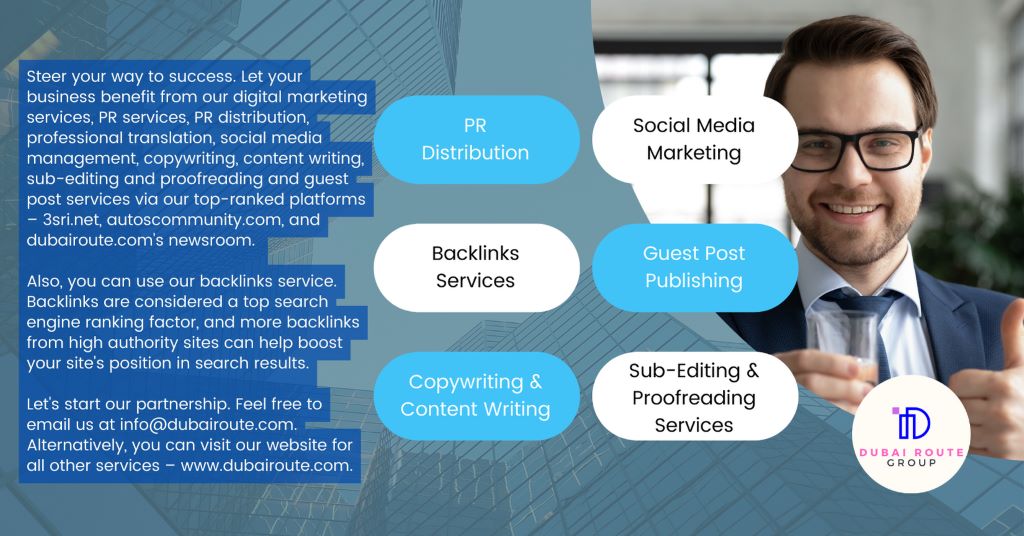From Fuel Cells to Feedstocks: A Guide to Hydrogen Applications, By IDTechEx
As the energy and industrial landscapes experience transformative shifts, the hydrogen economy stands at the threshold of sustainable growth.
The envisioned hydrogen value chain will integrate production, storage, and distribution systems, supporting various applications that span industrial processes to different transportation sectors. While electrification remains the predominant means of decarbonisation for many sectors, hydrogen emerges as a critical solution for these hard-to-abate industries.
Therefore, it is essential to concurrently develop both the hydrogen value chain and its diverse applications. Each sector presents unique challenges and growth drivers, yet they all highlight the pressing need for decarbonisation. Hydrogen, although not a silver bullet, offers a versatile and viable approach to achieving a more sustainable industrial ecosystem.
This article presents the multifaceted roles of hydrogen, ranging from its uses in industrial feedstocks to powering fuel cells in mobility sectors. For a more in-depth exploration of each industry and associated technologies and commercial activities, please refer to IDTechEx’s market report, “Hydrogen Economy 2023-2033: Production, Storage, Distribution & Applications”.
Traditional Industrial Application
Traditional industrial sectors such as refining, ammonia, and methanol production play a crucial role in the evolving landscape of hydrogen technologies. IDTechEx projects that petrochemical refining will remain one of the largest consumers of low-carbon hydrogen for the foreseeable future.
Hydrocracking and hydrotreating are vital processes that use large amounts of hydrogen, with the latter being the primary hydrogen-consuming operation in a refinery. Factors like increased global oil consumption and the need to process heavier crude oils drive this sector’s growing demand for hydrogen.
Petrochemical companies are making efforts to reduce their carbon footprint. Many refineries are located in industrial zones or chemical parks, becoming focal points for new carbon capture and hydrogen infrastructure projects, such as the Stanlow Refinery within the HyNet North West initiative.
Also, hydrogen can potentially reduce further emissions in refineries by using energy and heat generation systems, which currently rely on combustion technologies. However, it is worth noting that such advancements are expected to gain momentum in the refining market over the long term.
Ammonia production is another vital application for low-carbon hydrogen, significantly contributing to decarbonisation initiatives in the fertiliser and chemical industries. Adapting the Haber-Bosch process to accommodate green or blue hydrogen offers a promising avenue for reducing CO2 emissions.
In addition to its traditional uses, ammonia is gaining traction as an effective hydrogen carrier for international transport, indicating prospects for sustained growth in this domain.
Companies such as Yara, Nutrien, OCI Nitrogen, and SAFCO are at the forefront of these efforts, already implementing carbon capture, utilisation, and storage (CCUS) technologies in their plants. Despite limitations, such as carbon capture rates capped at around 70%, new projects spearheaded by Horisont Energi, ADNOC, and CF Industries aim for capture rates above 90%.
On the green ammonia front, multiple companies, including Fertiberia, Yara International, and CF Industries, are planning plant start-ups after 2025 with varying capacities. Projects like the NEOM green ammonia initiative are awe-inspiring, setting to install over 2GW of ThyssenKrupp nucera’s alkaline water electrolysers, targeting daily NH3 production of 600 tonnes.
Similarly, methane pyrolysis companies like Monolith and Hazer Group are also entering the ammonia sector. These blue and green ammonia developments signify a combined effort across the industry to push toward more sustainable and efficient ammonia production.
IDTechEx also identifies low-carbon methanol production as a crucial, albeit less prominent, avenue for hydrogen application. Companies like Carbon Recycling International (CRI) are making significant progress in developing projects like the Finnjord E-methanol plant.
Methanol is vital in various chemicals and is increasingly used in energy storage and as an automotive fuel. Using green or blue hydrogen can substantially reduce emissions in chemical production.
However, like green ammonia, green methanol production remains cost-prohibitive and mainly depends on the CO2 source. Moreover, the CO2 must be sourced from direct air capture or waste/biomass for the methanol to be classified as truly carbon neutral.

Emerging Industrial Applications
IDTechEx anticipates a significant role for hydrogen in steelmaking in the medium to long term. Conventional steel production contributes to 7-9% of global CO2 emissions. Leading companies such as ArcelorMittal, SSAB, and Tata Steel are actively researching hydrogen-powered direct reduced iron-electric arc furnace (H2-DRI-EAF) technologies to produce more sustainable steel.
This is exemplified by the HYBRIT Demonstration project – a Swedish collaboration between SSAB, LKAB, and Vattenfall. The companies are working on demonstrating a fossil-free steel value chain using renewable energy and hydrogen in Sweden, which involves decarbonising all elements of the steelmaking supply chain. Although technological challenges persist, hydrogen stands as a pillar in this transition.
The application of hydrogen in power and heat generation is still in the early stages but holds critical promise for broader decarbonisation efforts. Hydrogen has potential applications in renewable energy storage, off-grid storage, and combined heat and power (CHP) plants.
Despite efficiency losses in power-to-gas-to-power conversions, hydrogen presents an attractive alternative for off-grid applications with limited options. However, the use of hydrogen in power and heat applications, particularly renewable energy storage, still requires refined business models to make it more commercially viable.
Hydrogen also plays an essential role in biofuel and synthetic fuel production. First and advanced-generation biofuels can become increasingly carbon-neutral by applying green hydrogen. Major refiners like Neste and TotalEnergies are focusing on these fuels, propelled by consumer demand and regulatory policies. However, IDTechEx expects hydrogen’s role in this sector to be comparatively limited, at least in the medium term.
Mobility Applications
Fuel cells are a critical technology that would be used to power these transportation sectors. These transportation sectors will require the efficient integration of fuel cell stacks with suitable hydrogen storage methods, heat exchangers, and other balance of plant (BOP) components. Most attention is focused on the proton exchange membrane fuel cell (PEMFC), which will power the FCEV segment.
FCEVs have gained momentum, particularly in key regions like Korea, Japan, Germany, and China, with the increasing development of refuelling infrastructure and new vehicle concepts for light-, medium– and heavy-duty vehicles.
However, rapid advancements in battery electric vehicle (BEV) technology will likely sustain its market dominance, rendering FCEV adoption more modest. FCEVs present a compelling value proposition in heavy-duty trucks and buses, potentially catalysing broader hydrogen refuelling infrastructure development.
Hydrogen is emerging as a viable alternative in maritime applications, facilitated by advancements from companies like Ballard and PowerCell. Hydrogen fuel cells, excellent oxide fuel cells (SOFCs) and PEMFCs show promise.
The advantage of using SOFCs in maritime is their fuel versatility, as they can use LNG and ammonia. The rising production of green hydrogen is paving the way for the supply of green ammonia. As this becomes more readily available and SOFCs become commercially viable, ammonia use in marine vessels will increase and may limit hydrogen’s adoption.
Hydrogen is also making strides in rail transport, led by manufacturers like Alstom and Accelera (Cummins). These trains offer advantages in range and refuelling compared to their BEV counterparts. However, the higher costs of green hydrogen necessitate government support for mass adoption.
Germany is leading the way in fuel cell multiple unit testing and deployment. However, other countries like the US, France, and Italy have also placed orders for hydrogen-powered trains. They are expected to put the technology into passenger service within the next few years.
Aviation is likely to see hydrogen-based solutions in the longer term, post-2035. While sustainable aviation fuel (SAF) will dominate the medium term, hydrogen remains essential for decarbonisation. However, various hurdles, ranging from technical integration to the absence of regulatory frameworks, impede rapid commercialisation.
Nonetheless, companies like ZeroAvia, Universal Hydrogen, and H2Fly are progressing significantly through flight demonstrations and developments of liquid hydrogen and high-temperature PEMFC technologies.
Future Directions & Further Insights
Hydrogen is expected to initially penetrate markets where fossil-fuel-based hydrogen is prevalent – refining, ammonia, and methanol. Among emerging sectors, steelmaking appears most promising for hydrogen adoption. However, applications in power and heat, as well as sustainable fuel production, remain long-term objectives.
While the FCEV sector will dominate hydrogen applications in mobility, the rapidly growing BEV sector will continue to overshadow it. Other mobility applications are still nascent and will remain long-term industry focuses. In summary, hydrogen will maintain its vital role in decarbonisation strategies but will likely see an immediate impact in industrial niches rather than widespread adoption.
The IDTechEx report, “Hydrogen Economy 2023-2033: Production, Storage, Distribution & Applications“, offers an exhaustive overview of the value chain, including technological analyses, comparisons, commercial activities, innovations, and market trends.
UP IN NEWS
- CAKE Announces Deus Ex Machina as Australian Distribution Partner
- The Things You Should Never Do With Your Car
- Volvo Car USA Announces Pricing for 2025 Volvo EX30
- Hyundai Motor America Reports September and Q3 2023 Sales
- Toyota Gazoo Racing Grabs World Title After Landslide Victory At 6 Hours Of Fuji
For all the latest automotive news, reports, and reviews, follow us on Twitter, like us on Facebook, subscribe to our YouTube page, and follow us on Instagram, which is updated daily.
Stay Ahead of the Curve
Unlock the World’s Leading Source of Automotive News and Analysis.
Autoscommunity.com provides innovative marketing and advertising solutions to support an advertiser’s specific campaign objectives.
Customised programs leverage the best of Autoscommunity.com. Please get in touch with our sales team today and see what our team can do for your custom advertising solutions.
-
Email: [email protected]
-
Please Read Our Privacy Policy
Why You Can Trust Autos Community
Our expert, award-winning staff selects the automotive-related news we cover and rigorously researches and tests our top picks.








Comments are closed.